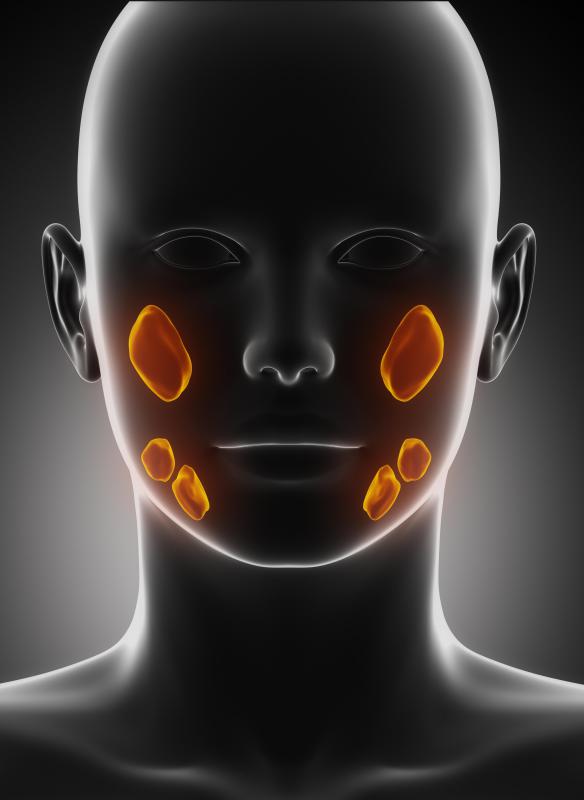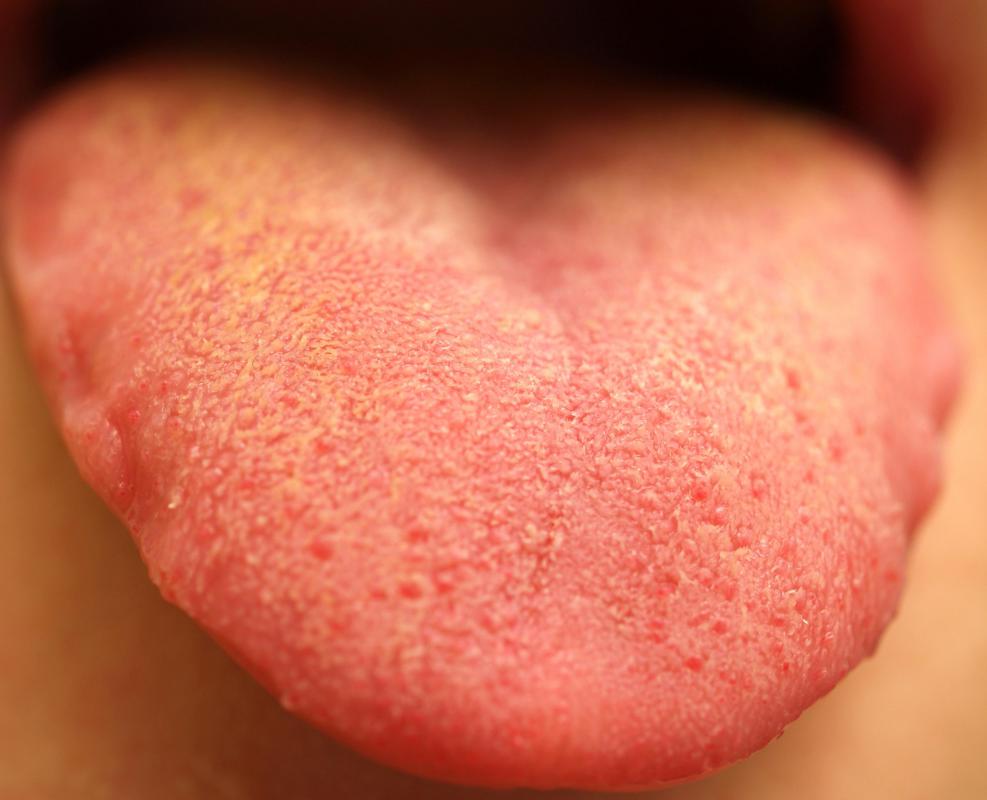At WiseGEEK, we're committed to delivering accurate, trustworthy information. Our expert-authored content is rigorously fact-checked and sourced from credible authorities. Discover how we uphold the highest standards in providing you with reliable knowledge.
What is the Parotid Duct?
Also known as Stensen's duct, the parotid duct is a tubular structure located inside the parotid salivary gland. The duct takes saliva from the parotid gland into the mouth at the level of the upper molars. Since the parotid duct lies close to the surface of the face, it may be harmed during facial surgery or due to accidental injury. Sometimes what is called a salivary stone may form and block the duct, requiring removal by keyhole surgery.
Saliva is necessary for moistening and cleaning the mouth and enabling swallowing to occur. When a person is speaking, saliva helps the tongue move freely. It also has antacid and antibacterial properties, and contains enzymes that digest starch and fat.

There are three pairs of salivary glands in all. The submandibular glands lie beneath the floor of the mouth, and the sublingual glands, which produce the most saliva, are under the tongue. Situated in the cheeks, just before and slightly below the ears, are the parotid glands. They are the largest type of salivary gland. Many tiny salivary glands also exist scattered in and about the oral cavity.

The parotid duct is around 2 inches (about 5 cm) in length. Cells inside the parotid gland produce saliva, which then drains through smaller ducts into the main parotid duct. The parotid gland makes about 20 percent of total saliva, and it is quite watery compared with the secretions of the other salivary glands. After its emergence from the gland, the parotid duct runs forward across the masseter muscle of the cheek. In some people a tiny accessory parotid gland is found here which also drains into the duct.
Just before the parotid duct opens into the oral cavity it passes between the mouth lining and one of the cheek muscles known as the buccinator muscle. The two surrounding layers act as a valve and protect the duct from inflating when a person blows air out forcefully. This mechanism proves particularly useful for people who blow glass or play brass and woodwind instruments.
Occasionally, blockage of the parotid duct can occur. This typically happens when a salivary stone becomes lodged within the duct, causing a blockage of saliva. The gland usually swells and feels painful, especially around meal times, and infection may follow. Sometimes stones may pass out of the duct by themselves, and massaging the gland, together with antibiotics and pain relief, may be all that is required. Otherwise, treatment involves removal of the stone using keyhole surgery after any associated infection has been resolved.
AS FEATURED ON:
AS FEATURED ON:












Discussion Comments
I had a parotid tumor removed, but it turned out to be benign. It was big enough to move my parotid duct out of place.
I had noticed a lump below my ear, and I was afraid that my lymph nodes were swollen. I knew this could mean cancer or some type of infection, so I got it checked out.
My doctor recommended a CT scan of the area. The tumor showed up, and she identified it as a pleomorphic parotid adenoma. These are often benign, but I needed it removed, anyway.
I play the trumpet, so I'm glad that my parotid duct is held in tightly by muscles. I would hate for it to be stretched every time I blow into the instrument, because I have to use constant force of varying levels to make sounds.
My cheeks always puff out, and I say that playing the trumpet is a great facial exercise. Maybe since the parotid duct is confined, this is why saliva doesn't fly out everywhere with each note.
I wonder if maybe my cheek muscles are even stronger than most folks' because of the frequent workouts. If so, then my parotid duct is really secure in its location.
@shell4life – I had a stone in my parotid duct, and the painful swelling was worse than the dry mouth. Eating became an unpleasant experience, because it would hurt so much.
It was even worse when I ate sweet and sour chicken. The sourness made my glands produce more saliva, but it could not get out of the duct, so this made it swell even more. I realized that after I had already eaten the sour food.
My doctor managed to massage the stone right out. He knew just how to push in the right places to make it come out. He gave me antibiotics, since the area had become infected.
Having a blocked parotid duct would be terrible! I have had dry mouth as a side effect of medications before, but I imagine it's nothing compared to a major lack of saliva.
Anytime my mouth gets dry, I become incessantly thirsty. I can't drink enough to make it better. Saliva is so essential to feeling normal and comfortable, and you really notice it when it is missing.
Has anyone here ever had a blocked parotid duct? How horrible was the experience?
Post your comments